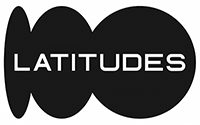Emeka Udemba

Captivated by creativity ever since he was a teenager helping his photographer father to hand-colorize his black-and-white pictures, Nigerian artist Emeka Udemba was destined to be an artist.
Acquiring a broad background in artistic practices while studying art education at the University of Lagos, he landed a solo show with his work at the Goethe Institute shortly after graduating. The exhibition was a success, in that he not only sold his first works of art to local collectors but the cultural center’s director was so taken with his work and disposition that she suggested he move to Germany and helped him settle in Freiburg, a university city in the Black Forest that’s known for its comfortable climate. His next big break came when he was invited to exhibit work in a group show about artists from Africa and its diaspora at the Haus der Kulturen der Welt in Berlin. But it was his installation art piece about immigration, which won the French Ambassador’s Prize at the 2002 Dakar Biennale, that set him on his way for further successful shows across Europe, Africa and Latin America. Working with installation art, photography, performance art, video and painting, Udemba soon established a career in Europe and then founded an art space in Lagos to support younger artists.
In 2013, he started making his signature style portrait paintings with added elements of colorful, transparent collage. Appropriating anonymous images of refugees and impoverished people found on the Internet, Udemba gives prominence to these subjects by portraying their inner beauty while surrounding them with swirls of colored papers and mediated information that’s usually used to define them.
“It’s not about creating realistic portraits of my subjects,” the artist shared by phone from his Freiburg studio. “I view my paintings more as constructions, where I employ print material to make the viewer go beyond just looking at the person in the painting. I want the viewer to see the information swirling around us so that they can understand how it impacts the way we define other people.”
Realism is secondary in his constructions. His work is more investigative; it’s more about the questioning of identity. He’s creating a psychological situation, in which fragments are consciously placed, particularly around mouths and ears—as though he’s exclaiming that much is being said and heard on a daily basis, but that you have to discern what is meaningful.
Udemba’s ennobled figures, such as the two boys depicted in the 2019 painting Translation 2, seem distanced or removed from reality. The artist has envisioned them in a floating space, where there is no discrimination. He’s interested in the idea of an endless space—a borderless space that’s not defined by where you belong by outside forces. They are free to occupy a space in which they can be who they want to be, as the female figure daringly does in his 2020 painting Angel.
“My figures are in a space that has no demarcation,” Udemba added during the phone conversation. “They have all of these pieces of paper with information floating around them. It’s a space for speculation. It’s full of ideas that can be seized. The figures are free to think what they want to think. They inhabit spaces that have little or no constraints.” Beyond the humanist ideology conveyed in the work, Udemba’s paintings are also fascinating in the highly inventive way in which they are made. The artist begins each painting by covering the canvas with layers of newsprint to give it texture, but instead of applying the paint with brushes he uses pieces of recycled plastic that he cuts to size to make a desired mark. A thin piece of plastic is used to outline the figures, while larger bits of plastic are used like a palette knife to lay down bands of transparent color.
Once the figures are set on the canvas, he covers them with thin pieces of colored paper (some that he has painted himself to get the palette that he wants) and slices of random texts culled from newspapers, brochures and advertisements that he picks up during his travels. Veiled in a blizzard of information, his people are nearly invisible, which is the plight of the immigrant, who can seem invisible to some even as they try to sometimes make themselves invisible to all in order to avoid trouble. His 2019 painting Maverick No. 1, which captures the bust of a compelling black man in a storm of colors and facts, could be seen as a surrogate self-portrait. Universally speaking to the immigrant experience, it depicts a non-conformist—a man who wants to be himself rather than seeing himself through the eyes of others. He’s a man who sees beauty as humanity, as treating people with dignity.
“I want my work to create a space for education, for enlightenment, for discussion,” Udemba further stated from Freiburg. “If my work can stimulate conversations about how we relate to one another, I’d see it as a success.”
Seeing is Believing by Paul Laster
Read More
















